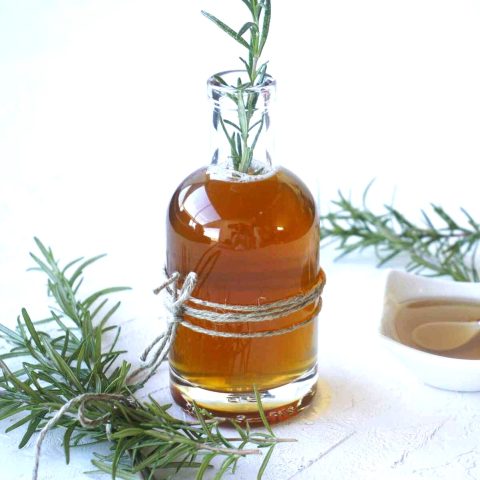Every year starting in September I impatiently wait for rose hips to ripen. Some people don’t like them for their sticky seeds inside, thorns that prick you when you collect them, etc. But for me these are just small obstacles to stop foraging them as their medicinal benefits, as well as taste, are fully worth it.
These red fruits of rose bush were used by our ancestors for centuries. Their valuable nutrients help them survive during the cold months of winter. Thanks to the high content of vitamin C, rosehips replaced citrus fruits that were hard to get during World War II. They also contain other vitamin E, B minerals, and antioxidants that contribute to their health benefits.
About Rose hips
There are several types of rosehips from various Rosa species and all are edible. Wild roses, as well as cultivated roses, possess the same medicinal benefits and uses, we have covered this topic in an article related to Rose petals
This post will solely focus on rosehips, how to identify, forage, preserve and use them in recipes, homemade remedies and natural skincare.
There are more than 300 Rosacea species however these 5 are the most common dog rose (Rosa canina), sweet briar (Rosa rubiginosa), field rose (Rosa arvensis), downy rose (Rosa villosa) and burnet rose (Rosa spinosissima).
The Rosehips or rose hips also called rose haw and rose hep. The ‘hip’ in rosehip is a false fruit. The true fruit however is called achenes and is small, dry, and hard found within the rosehip.

Identifying Rose hips
Rose hips begin to form after successful pollination of flowers in the spring when they appear green and hard. They ripen in late summer with noticeable color change turning to orange and deep shades of red at maturity. While the outer flesh is delicious tasting, sweet, and tart. Inside the fruit are plenty of seeds that are irritating but packed with powerful ingredients.
Rosehips can be found worldwide in a wide variety of natural habitats, in fields, roadsides, trails, riverbanks gardens or along woodland edges.

When to pick rosehips?
There are articles that they should be picked after the first frost. Well, it depends. In the place I live there’s hardly any frost so I just collect them from September all the way to December, like acorns. Red or orange in colour they provide a great treat for squirrels or birds. Just make sure you avoid places that have been treated with pesticides
It is good to remember that rose hips come with thorns so long sleeves, trousers and closed toe shoes are best bet. I always harvest them with prunes to protect the shape of the plant and wear garden gloves. I usually don’t collect more than 1 – 2 cups from one bush to keep something for wild animals.
If you prefer to buy rose hips, Mountain Rose Herbs is a reliable source of organic quality herbs.
Safety and Precautions
Some individuals may experience mild irritation from the hairs on the seed.
Rosehips are not recommended for pregnant and breastfeeding women, for diabetics, for people experiencing kidney stones or for a bleeding condition or iron-related disorders (3)

Preserving Rose hips
As I mentioned above rose hips contain irritating seeds which make it difficult to eat them as they are. When ripped and soft you can push the seeds away and eat the tasty and juice flash. But if you want to make jams, powder or syrups there are several ways to do it.
Once you collect the sufficient amount of rosehips that will supply you with vitamins and minerals for the whole year, wash them thoroughly and select the method of preservation that will suit your needs.
1. method – cut them in half and deseed them
The first method is more time consuming and results in rose hips almost free of any seeds. By using a sharp knife cut each washed rosehip in half carefully and dig out the seeds and itchy hairs that are inside with your fingers, a tiny spoon or round-tip knife. This method requires patience but the result is rewarding. Such cleaned rose hips can be later used for making rose hip jam, roasted tea, rosehip sauce, powder or other delicacies.

2. method – Use a blender to break the fresh rose hips apart
The second method is much faster and requires a blender. Place the rosehips into a blender and give them a quick spin to mesh them. Mashed rose hips can be used fresh for making tea or syrup or place the mixture on the paper to let it dry. Once dried, use a large sieve to silt the mixture and remove the seeds. You might want to repeat the sifting process depending on the size of your sieve. Shake it well to remove all pesky hairs. You can store the dried rosehips for later use in making versatile rosehip powder, smoothies, soups, or tea.
If you intend to use the rose hips in your skincare to make rosehip oil you want to use meshed rose hips with seeds that possess many benefits for the skin and hair.
3. method – cooking
The third method requires cooking where you cut the end and tail off of the rose hip, place them in a cooking pot, add the same amount of water and cook till the fruits become soft and mushy. Once they have a mushy texture you can start getting rid of the seeds through a strain. You need to get a cloth or sieve and start straining several times till there are no hairs as they are highly irritative. Cooked rosehips can be used for making rosehip jam, or sauce.

4. method – Drying rosehips
Whether you decide to dry to deseeded rosehips or mesh the rose hips with the seeds the drying process remains the same.
You can dry them outdoors in the sun if the weather allows you. Just spread them on the clean paper, screens or wax paper. It might take several days before they are completely dry. I usually take them indoor overnight and next day depending on the weather I move them back outside.
If the weather isn’t favorable you can dry them indoors which might take week or two. Find well ventilated places in the warm part of your house with access to the sun. Once dried store them in a glass jar or paper bag.
To speed up the process you can use an oven on very low heat below 42 degrees celsius, it might take 2-3 hours.
An energy friendlier way is to use a dehydrator that allows you to place them on a thin layer on the racks. It might also take several hours depending on the quality of the hips, size and quantity.
Benefits of Rosehips on the skin
Rosehip oil for acne
Rosehip seed oil is a powerful ingredient that is used to fight acne as well as wrinkles. It also speeds up healing, eases inflammation and strengthens nails and hair.
We have used its power in soaps, eye cream and lip balm that enhanced the skin.

Rosehips benefits in remedies
Rosehips possess antioxidant activities and may protect us against free radicals. They have the highest content of vitamin C when compared to other fruits and vegetables (5). Therefore they might protect our body against infection as well as help maintain a skin’s protective barrier against outside pathogens.
This elderberry rosehip tincture made by macerating elderberries and rosehips in alcohol helps boost our immune system and protect the body against cold and flu.
Antioxidants rich fire cider is an alcohol-free way to boost your immune system and warms our body in cold winter months.
Benefits of rosehips in recipes
Thanks to the high content of vitamin A, C and E rosehips are important players in the prevention of cold and flu. Antioxidant-rich rosehips help in the protection and strengthening of the immune system. (1)
Their high concentration of Vitamin C, as well as flavonoids, may help to protect our bodies against heart diseases and improve blood flow. (2)

Our rose hip jam is a hit that turned the ordinary cookies into rosehip surprise cookies. The cranberry and rosehip sauce make for a great addition to turkey or ham but I also enjoy it with goat cheese and crackers.
I like to make versatile rosehip powder that I successfully use in these protein balls or smoothies. Or just sprinkle on my morning yoghurt or ice cream.
Roasted tea or rosehip tea are my favorite warm drinks during cold winter months. If you prefer something stronger go for rosehip wine or homemade whisky smash.












This is something I have been looking for. I have lots of wild rose bushes in mt area and I really want to learn ti use them to their full potential!
You are in the right place then! If you search on this site by category, you will find many recipes under “Rose hips” category or under “rose”. Enjoy Vladka
I use rosehips a lot but I have yet to harvest my own! I definitely want to try it next fall! Thank you for this post – it’s super helpful (like all of your posts!) 🙂